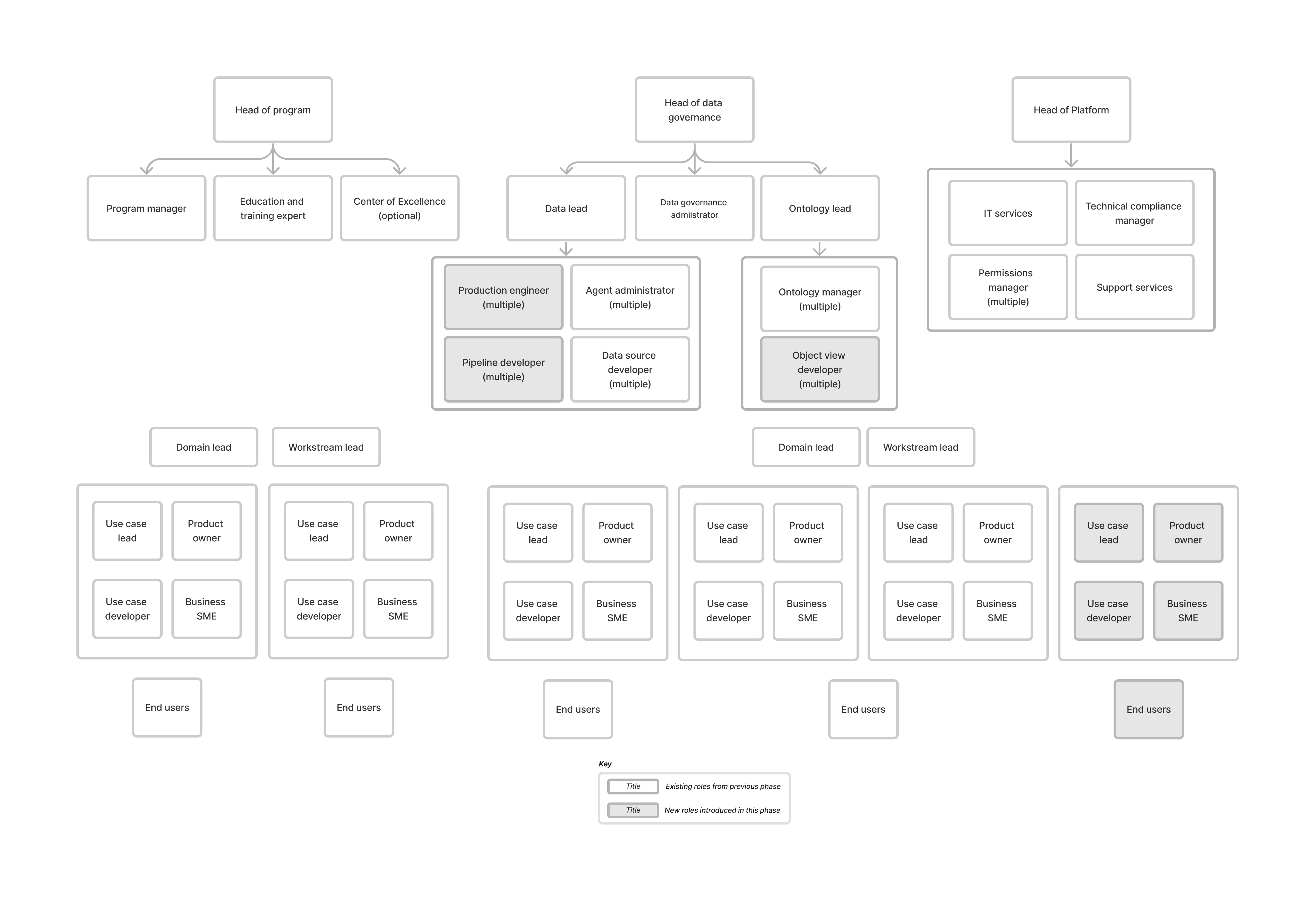Phase 4: Hypergrowth
What does the organization’s use of Foundry look like?
- At this point, the Foundry Program should be largely self-sufficient; Palantir engineers can be brought in for use case boosts and other advisory services, but daily operations and forward-facing building initiatives are managed entirely by internal teams.
- While the Program team is focused on the continued growth and scaling of the Foundry platform, they should also be focused on ensuring that areas using Foundry are becoming more self-sufficient over time. Strong education and support services are a large contributor to this drive for autonomy among users. This focus allows the central Program team to work primarily on core maintenance and on growing use cases and aiding other areas into maturity on the platform.
- Governance and processes should be mature and in full operation; they should be aiming to ensure the Program runs smoothly across a growing group of internal teams, use case teams, and external stakeholders and organizational users.
What does the Foundry Program team look like?
- Phase 4 is about maintenance, and continued growth, as an autonomous team.
- Program-core teams should be focused on working across domains to bring new areas onto Foundry and continue adding new use cases and feature requests to the roadmap in the pursuit of organizational goals. Team challenges in this phase are in managing an ever-growing environment of use cases and users, and their attention should be on scalability and the management of large and complex projects and processes.
- The Platform team will have matured since the last phase and should be setting into governance processes and regular collaboration with major partners across other workstreams. The Platform team should experience full and autonomous ownership of the Foundry platform at this point, with touchpoints into the organization’s IT team and architecture as well as support from Palantir support services where needed. The Platform team should be driving progress and leveraging these relationships mostly for advisory and information sharing purposes.
- In this phase, the Data team should receive more specialized and nuanced resources. With an expanding portfolio of use cases and workflows to manage, the Data team’s roles can become more focused to support the complexity of a larger Foundry platform. Data ingestion and Ontology management are core to the success of any Foundry platform, and careful management becomes more important over time as the platform continues to diverge and cover more focus areas. Therefore, an investment in resourcing in these areas is required to support long-term scalability for the platform and to prevent blocking growth due to data and Ontology request backlogs.
How do we focus our resourcing efforts?
- In this phase, the Data team needs to review the Foundry Program’s overall roadmap, goals, and vision. The roles we recommend adding in this phase focus heavily on supporting data engineering and data science as the foundational support structure to the organization’s Foundry usage. The Data team should look ahead to where the Program expects Foundry’s evolution to be in the next one to three years and look for Data resources to support the long-term vision as well as short-term resourcing needs.
- The roles identified below are for individual contributors who can be strong members of the Data team within the Foundry Program. You can look either internally or externally for talented developers and data engineers who have experience working with either Foundry or large data platforms. They should be well-versed in best practices in their area of focus and should be strong individual contributors who can own their assigned areas autonomously. For all three roles, you should also be looking for individuals with good communication skills who can collaborate with other areas of the business to ensure that the holistic suite is working as needed to achieve business outcomes.
Phase 4 roles
The following diagram shows the various roles and teams within the Foundry Program team that are responsible for Foundry implementation in Phase 4:

Learn more about Program team roles and responsibilities in Phase 4.